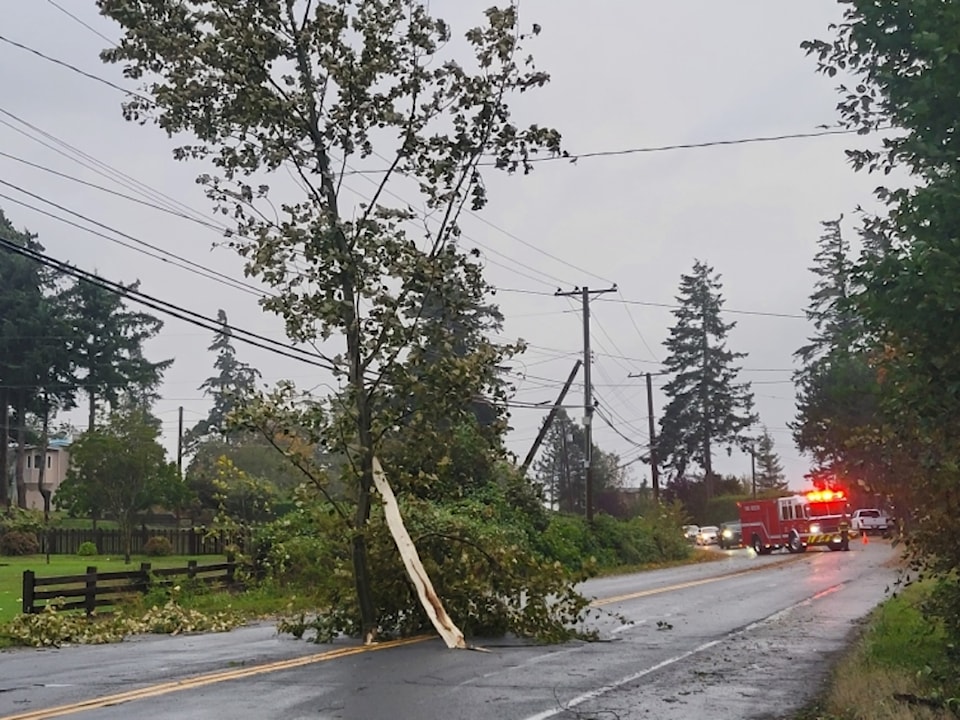Campbell River resident Charlie Hallstrom was startled by a sudden loud noise on Thursday (Sept. 26) as a powerful storm, a remnant of Typhoon Pulasan, swept through Campell River and the North Island.
"It felt like an earthquake," Hallstrom said.
He looked outside to see a large branch of a poplar tree had crashed onto Highway 19A due to the intense winds. The branch was protruding from the concrete as if it had been growing directly from it, he remarked. The force of the branch pulled down the wire running across the highway, ripping a bolt out of his house and knocking out his power.
"It is kind of a miracle nobody got hurt this time," he said. "It was quite a lot of force. If it is not removed, it will take the lines out for sure."
As a professional in the forestry industry, Hallstrom is knowledgeable of the different tree species. Poplar trees, he said, are weak and prone to breaking in storms. To prevent them from growing too tall on his property, he strips away the bark.
Jamie Wood, who was across the highway at the Wood Creek Cottage Bed and Breakfast at the time of the storm, said he is worried someone, perhaps children, could be killed if they happened to be driving by and the tree falls.
"I want it gone," said Wood, who has also worked in the forestry industry. "It's going to kill someone."
The lane of the highway was closed for two hours to clear away the branch, Wood added.
During the height of the windstorm, which occurred between 2 and 3 a.m., approximately 15,000 customers lost power, primarily on Vancouver Island, said BC Hydro spokesperson, Karla Louwers. The areas most affected were Campbell River and Courtenay.
The power utility crews responded to call about the tree branch on a power line, she said.
BC Hydro's vegetation management team routinely examines trees and other tall plants growing under or alongside power lines to detect potential problems, Louwers said.
"We have a vegetation management program that focuses on routinely pruning or removing trees to prevent them from growing into our power lines to ensure public safety and help reduce tree-related power outages," she wrote in email. "We also inspect and remove trees adjacent to power lines that are declining in health to prevent them from falling on and damaging our electrical equipment."



